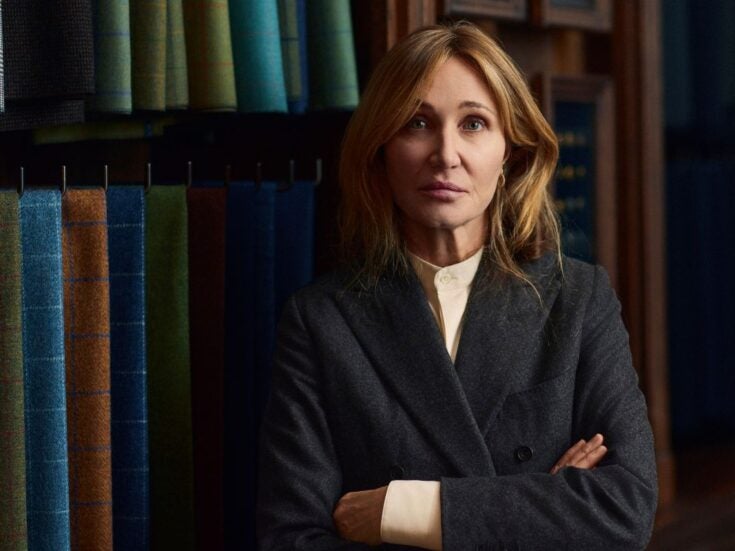Blazon Squad Nothing says you’ve arrived quite like your very own escutcheon. Getting one drawn up is easier and more amusing than you might expect, as Josh Spero finds on a visit to the College of Arms
Blazon Squad
Nothing says you’ve arrived quite like your very own escutcheon. Getting one drawn up is easier and more amusing than you might expect, as Josh Spero finds on a visit to the College of Arms
A GOAT WITH a tennis racquet. A massive diamond resting under a hippopotamus’s front foot. Polychromatic parrots, butterflies with quills, scaly beasts of the sea and a blackbird cawing at a guitar. While these may sound like your raucous imaginary friends after a touch too much absinthe, they are in fact a few of the fanciful designs which adorn and abut new coats of arms.
‘Fanciful’ may be unfair. When one attends the College of Arms, the only beautiful building on Queen Victoria Street, to meet a herald and design a coat of arms, fancy is far down the list of considerations, after personality, beliefs, career, passions and allegiances. These are not, after all, whimsical purchases, however unexpected the menagerie which evolves. Once you have paid your fee and are satisfied with your design, the coat, crest, flag and motto belong to you and your family in the male line henceforth until such time as you shall have no suitable heirs. They will last as long as your name does, and possibly even longer.
Given this prominence of posterity, and for a body which lives to preserve a medieval tradition, the College of Arms is surprisingly modern in its outlook. Clive Cheesman, Richmond Herald, comes across as an acute but easy-going guardian of history. An Oxford classicist, he has served as one of the heralds for thirteen years, meeting with prospective grantees, advising them on what is fit and unfit for their design and helping historians and journalists with research.
Before pencil is put to paper, and way before paint is committed to vellum (after Parliament, the College of Arms is the country’s biggest consumer of vellum), the applicant must be approved. In the first place, you must be a citizen of the UK or a Commonwealth country which is not a republic; Americans may have honorary grants and Scotland, as ever, has its own rules.

‘If you meet those criteria,’ says Clive, leaning on one of the large, dark brown desks in the College’s galleried library, ‘and one or two other, broadly drawn criteria, such as possession of a degree, eminence in your field or a public post of some description, then we can grant you a coat of arms.’ As long as you can afford the fee of £4,725 and are not a complete ne’er-do-well, a coat is yours; nearly 200 people took one last year, and interest has been stimulated by the Diamond Jubilee.
THEN COMES THE creativity — ‘the interesting and fun part,’ says Clive. ‘It has to be distinctive — different from all existing coats of arms. That’s the whole point.’ He estimates that 100,000-200,000 coats of arms are extant, which presents an obvious problem: how on earth can you find a doublet among so many coats? The College has a card index of symbols, so you can search by elephant or pelican, but is considering some digitisation of its records.
This uniqueness has to be balanced against tradition, though Clive stresses that it is ‘a very broad church’. The colour palette is limited, reflecting a medieval herald’s Crayola set, and the tinctures still bear their original names: azure and sable, murrey and tenné. (Blue, black, purple and orange to a modern.)
Items which have not made an appearance on a coat before or cannot be represented with simple shapes may be less likely to win approval: ‘One of the drawbacks with modern artefacts like computers or watches is they’ve got casing that deprives them of any distinctive shape, whereas medieval artefacts often have nice, clear, visible forms, so you can show your coat of arms in monochrome and very small and still see what’s on it. We have no intrinsic opposition to including modern or everyday objects, if they’re clear and easily recognisable.’
Clive cites a family who made their fortune through jet engines: instead of having the bulky shape of the engine, they represented the unique way their rotor blades locked into place with three spikes converging at the point of the shield. ‘The family looking at that knew exactly what it was talking about, but a lay observer would see a good classic coat of arms,’ he says with the satisfaction of a man who has solved a particularly taxing cryptic crossword clue.
If you do not let your eye get distracted by the gaudy coats of arms while you flick through the oversize book into which all are painted, you can learn a lot about the sort of person who buys a coat, because beside each one is the calligraphed grant, which tells you who from where applied. Sir Bufton Tufton from the Shire is well represented — Clive instantly concedes that petty snobbery can be a strong motive in applying — but there are also people from Hong Kong who want a little colonial class; enermined peers who require a coat; and QCs, admirals, priests and politicians who want to set an official seal on their careers.

A coat of arms suitable for Spear’s, as designed by our heraldic advisers. The snake sits against the ‘ladder’ on the shield, representing the twists of fortune. The motto means ‘Not many things but much’ and suggests much wisdom is better than many possessions
MUCH IN A coat can then be explained once you look at the grantee. In 2002-3, Sir Paul McCartney was granted his coat, which has six thin lines in black and yellow passing over a black circle, suggesting nothing as much as a guitar’s soundboard; in the crest, the item shown over the shield, often on top of a helmet, is the blackbird mentioned earlier.
Lord Browne of Madingley, erstwhile Spear’s interviewee, has green shells on his, representing the origin of petrol. His motto is ‘Memento Historiae’, perhaps more in regret than in anticipation. The Barclay brothers chose identical coats, except with the red galleon reversed on one: one brother is left-handed, one right. Sir John Major’s is a good example of how to combine passion with tradition and elegance: three red circles (cricket balls) sit above a yellow portcullis (for politics) on the shield, while the crest has a stag (for Huntingdon, his constituency) holding a key whose teeth are the letter M.
The best coats combine subtle symbolism with a restrained aesthetic, working within the tradition but nevertheless looking modern in their geometric simplicity. The squirrel holding the candelabra, not so much. ‘There is a lay sense in some quarters,’ says Clive with a slight tenor of despair, ‘that heraldry should be fiddly or twiddly and that it only looks good if it’s really twiddly. I slightly rebel against that. Even on my sparse designs, there’s a helmet and there’s mantling and there’s a crest on the helmet.’ But simplicity in outline is important, because most uses will be small: ‘Nobody paints a big shield and goes into battle any more.’
The College of Arms, which has been a detached part of the Royal household since it was granted the regulation of heraldry in the kingdom in the 15th century, is self-funding, supported by its grants of arms not just to individuals but to commercial and corporate bodies, too. A company must be ‘of some standing’ and have at least five years’ trading behind it to apply, but for around £15,000 it can then put its coat of arms on everything from jam jars to airplanes and advertising.
While not especially appealing for modern businesses in Britain, where such liberal use could be seen as old-fashioned, it is exactly the sort of thing that exports well: it gives that impression of antique British dignity that those abroad are meant to find irresistible, along with Her Majesty and red phoneboxes.
college-of-arms.gov.uk
Read more articles of the week
Don’t miss out on the best of Spear’s articles – sign up to the Spear’s weekly newsletter






